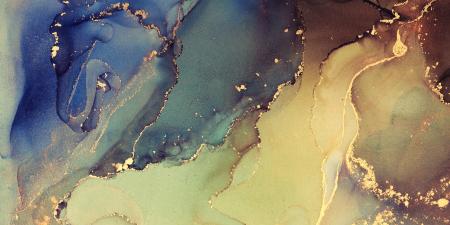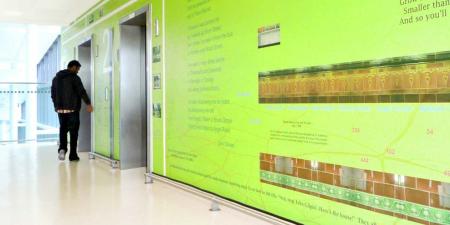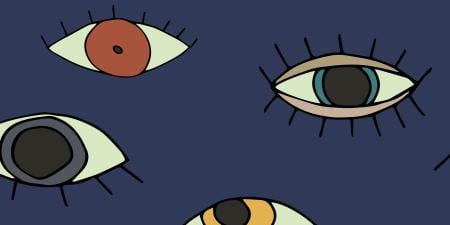Artistic or aesthetic ways of knowing have been embraced in many different cultures as forms of healing.1,2 In health care and health professions education, there is increasing interest in the role of arts-based research or integrating the arts into a variety of clinical and community settings for therapeutic, educational, and expressive purposes.3,4
Arts-based researchers recognize that nondiscursive methods of inquiry (eg, pictures, music, dance, poetry) can, in their creation, be forms of research. The arts have the potential to generate statements and insights that cannot be expressed, documented, or shared in other forms.5,6 They can provide a compelling means of engagement for multiple audiences, as they are capable of reframing our perspective and stimulating fresh thinking, dialogue, and connections. As such, the arts open spaces to challenge assumptions and call us to reconsider relationships and interactions that are fundamental in health care, research, and education.7
As an arts-based researcher and teacher, I have collaborated with caregivers, patients, and educators on numerous studies, including Portraits of Care at the University of Nebraska Medical Center (2006-2008).8 Each of these projects explicitly draws on art forms’ capacity to communicate relational, ethical, spiritual, and cultural aspects of medicine and care.9,10 My initial skepticism about art having healing power was fueled by my ideas about art therapy, which I felt was not applicable to my remit or aims. However, my resistance diminished as I witnessed the benefits experienced by people whom I was privileged to work with and portray. Their responses to their portraits and the act of sitting deepened my understandings of art’s potential function as a catalyst for connection and storytelling. The process of creating and engaging with art in research develops space for open communication, creativity, and imagination. It demands that we consider the relationships among the researcher, the researched, and the audience who engages with the resultant aesthetic forms. These relationships are themselves creative endeavors that parallel salient aspects of clinical interactions. The articles collected here invite us to further consider (1) the quality of the relationships between those who give and those who receive care; (2) how patients relate to their own illness; (3) the relationships we each have with our own self when we or loved ones fall ill; and (4) the relationships we have to the challenges and life events that we embrace and also resist.
This special issue of the AMA Journal of Ethics presents myriad ways that artistic expression as a primary mode of inquiry can be used to nurture an inspiring medical education wherein creativity is embraced and can flourish.11 The clinicians, educators, artists, researchers, and students who contributed to this issue make clear how much health professionals and students can learn from engaging with artistic ways of knowing. Moreover, they testify to how the arts can be enriched and informed by health care. My experience of working in clinical contexts has taught me more about communication and silence. We hope this special issue creates opportunities for readers to witness the relationships and interactions fundamental to medicine and to grasp the profound challenges and abundant rewards that await all who engage in arts-based research in clinical, public health, and community contexts.
References
-
Mcniff S. Art as Medicine: Creating a Therapy of the Imagination. Shambhala; 1992.
-
Moon CH. Studio Art Therapy: Cultivating the Artist Identity in the Art Therapist. Jessica Kingsley Publishers; 2002.
-
Liamputtong P, Rumbold J, eds. Knowing Differently: Arts-Based and Collaborative Research Methods. Nova Science Publishers; 2008.
-
Rollins J, Sonke J, Cohen R, Boles A, Li J. State of the field report: arts in healthcare 2009. Society for the Arts in Healthcare; 2009. Accessed August 15th, 2020. https://www.americansforthearts.org/sites/default/files/ArtsInHealthcare_0.pdf
-
Howley L, Gaufberg E, King B. The Fundamental Role of the Arts and Humanities in Medical Education. Association of American Medical Colleges; 2020.
-
Barone T, Eisner EW. Arts Based Research. Sage Publications; 2012.
- Kumagai A, Wear D. Making strange: a role for the humanities in medical education. Acad Med. 2014;89(7):973-977.
- Aita VA, Lydiatt WM, Gilbert MA. Portraits of care: medical research through portraiture. Med Humanit. 2010;36(1):5-13.
- Gilbert MA, Lydiatt WM, Aita VA, Robbins RE, McNeilly DP, Desmarais MM. Portrait of a process: arts-based research in a head and neck cancer clinic. Med Humanit. 2016;42(1):57-62.
- Gilbert M, Idoate RE, Rockwood K. Exploring the relationship between geriatric patients and their carers through portraiture: giving, receiving, observing and witnessing care (GROWing Care). Eur Geriatr Med. 2020;11(1):185-187.
-
Bleakley A. Medical Humanities and Medical Education: How the Medical Humanities Can Shape Better Doctors. Routledge; 2015.



